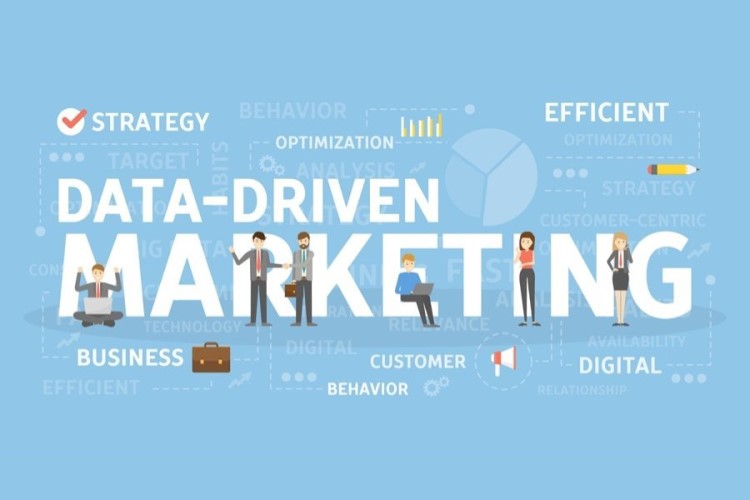
As technology advances, gathering and analyzing customer data has become more accessible, allowing businesses of all sizes to make informed decisions. However, balancing data use with ethical practices is essential. Customers expect transparency, so handling their information responsibly builds trust. With data-driven marketing, you can reach your audience in meaningful ways, build stronger relationships, and drive long-term success for your brand.
Understanding Data-Driven Marketing
Data-driven marketing is the practice of using data insights to guide marketing decisions. By analyzing data from customer behavior, preferences, and demographics, you can tailor your strategies to meet specific needs. This approach helps you create more targeted and relevant marketing campaigns. Instead of relying on guesswork, data-driven marketing lets you base your choices on real information, making your efforts more effective.
The importance of data-driven marketing lies in its ability to boost engagement and improve customer satisfaction. When you understand your audience’s preferences, you can deliver content that resonates with them. This relevance increases the chances of capturing their attention and driving conversions. With data insights, you can identify which products or services are most appealing to each segment of your audience.
Using data to inform your decisions also allows for better resource allocation. By understanding which campaigns perform best, you can focus your budget and efforts on what works. This efficiency not only saves time and money but also helps you build stronger customer relationships. Overall, data-driven marketing enables you to make informed, impactful choices that benefit both your business and your audience.
Collecting and Analyzing Customer Data
Collecting and analyzing customer data is essential for effective data-driven marketing. Website analytics is one primary method for gathering valuable information. By tracking metrics like page views, click-through rates, and user journeys, you can understand how visitors interact with your website. This insight helps you identify popular pages, see where users drop off, and discover which content resonates most with your audience.
Social media insights also offer a wealth of customer data. Platforms like Facebook, Instagram, and Twitter provide analytics on engagement, reach, and demographics. Monitoring these metrics shows you which posts gain traction, who your followers are, and how your content aligns with their interests. This data allows you to refine your social strategy, creating content that engages and attracts the right audience.
Customer surveys offer another powerful way to gather insights directly from your audience. By asking specific questions, you can learn about customer preferences, pain points, and expectations. Survey results give you firsthand data that often highlights areas for improvement or new opportunities. Once you collect the data, analyze it by looking for patterns, comparing it against past performance, and segmenting it by key demographics. By using website analytics, social media insights, and surveys, you gain a comprehensive view of your customers, allowing data-driven marketing to guide your strategies effectively.
Segmentation and Personalization Strategies
Segmentation and personalization are key strategies in data-driven marketing. By dividing your audience into segments based on demographics, behavior, or interests, you can tailor messages to meet their specific needs. Segmentation allows you to reach each group more effectively, increasing the chances of engagement and conversions. For instance, if you know certain customers prefer eco-friendly products, you can create targeted content that highlights your sustainable offerings.
Using data to personalize marketing campaigns adds another layer of relevance. Personalization involves delivering messages that feel tailored to individual preferences, making customers feel understood and valued. Email marketing is a great example; with data insights, you can send personalized offers or product recommendations based on past purchases. This approach not only captures attention but also builds stronger customer loyalty.
Data-driven marketing leverages these techniques to create a more meaningful connection with customers. By analyzing user behavior, preferences, and purchasing history, you can fine-tune your messaging and offers. As a result, segmented and personalized campaigns resonate more deeply with specific groups, fostering a sense of relevance and trust. Through careful segmentation and targeted personalization, your marketing efforts can reach new levels of effectiveness and customer satisfaction.
Using Predictive Analytics for Marketing
Predictive analytics is a powerful tool in data-driven marketing, helping you anticipate customer behavior and trends. By analyzing past data, predictive analytics identifies patterns that can forecast future actions, such as purchasing habits or content preferences. This insight allows you to create proactive campaigns that resonate with customers before they even express a need.
With predictive analytics, you can target customers with greater accuracy. For example, if data shows a customer often buys seasonal items, you can send relevant promotions before the season starts. This strategy keeps your brand top of mind and positions you as attentive to their preferences. Predictive analytics also helps you identify potential churn, allowing you to engage at-risk customers with tailored incentives that encourage them to stay.
By incorporating predictive insights into your marketing, you can develop campaigns that reach customers at the right time with the right message. This approach fosters loyalty and improves engagement because it shows customers that you understand their needs. Data-driven marketing with predictive analytics not only boosts customer satisfaction but also makes your campaigns more efficient, allowing you to allocate resources where they’ll have the most impact.
Measuring Campaign Success with Data
Measuring campaign success is a core component of data-driven marketing, as it allows you to understand what’s working and what isn’t. Key performance indicators (KPIs) provide concrete ways to track progress toward your goals. For example, metrics like click-through rate (CTR) and conversion rate reveal how effectively your content and ads are driving customer actions. High CTRs indicate engagement, while strong conversion rates show your campaigns are convincing users to take the next step.
Customer acquisition cost (CAC) is another important metric, as it tells you how much you’re spending to gain each new customer. By comparing CAC against customer lifetime value (CLV), you can see if your campaigns are cost-effective. If CLV significantly outweighs CAC, your campaigns are likely generating profitable growth. Additionally, tracking return on ad spend (ROAS) helps you assess the revenue generated per dollar spent, giving a clear picture of campaign efficiency.
Engagement metrics, such as bounce rate, average session duration, and social media interactions, provide further insights into how customers respond to your content. A low bounce rate or long session duration indicates that your audience finds your content valuable. By analyzing these KPIs, you can refine your strategies for even better results. Data-driven marketing relies on these metrics to guide continuous improvement, helping you focus on methods that maximize engagement and return.
Data Privacy and Ethical Considerations
Data privacy and ethical considerations are essential in data-driven marketing. Collecting and using customer data responsibly builds trust and protects your brand’s reputation. Customers share information with the expectation that it will be handled carefully and used for their benefit. By respecting these expectations, you show that you value their privacy and security.
Compliance with privacy laws, like GDPR in Europe and CCPA in California, is not optional. These laws set clear standards for data collection, requiring transparency about how and why you collect customer data. Informing customers about data usage and giving them options to manage their data builds transparency. It also reduces the risk of legal issues and potential penalties.
Following best practices for data handling means only collecting data you truly need and securing it against unauthorized access. Regularly reviewing and updating your privacy practices is essential to staying aligned with changing regulations. By focusing on ethical data usage, you strengthen your data-driven marketing efforts and maintain a positive relationship with your customers. This approach helps you build a loyal audience that trusts your brand to respect their personal information.
Conclusion
Data-driven marketing empowers you to make informed, effective decisions that connect with your audience in meaningful ways. By collecting and analyzing customer data, you gain insights that enable you to personalize campaigns and anticipate customer needs. This approach not only improves engagement but also strengthens customer loyalty over time.
Balancing data-driven strategies with ethical considerations is essential to maintaining trust. Respecting privacy laws and handling data responsibly shows your commitment to customer care. When you prioritize transparency and ethical practices, you build a brand that customers can rely on. By integrating data-driven marketing with responsible practices, you create a foundation for long-term success and meaningful customer relationships.


